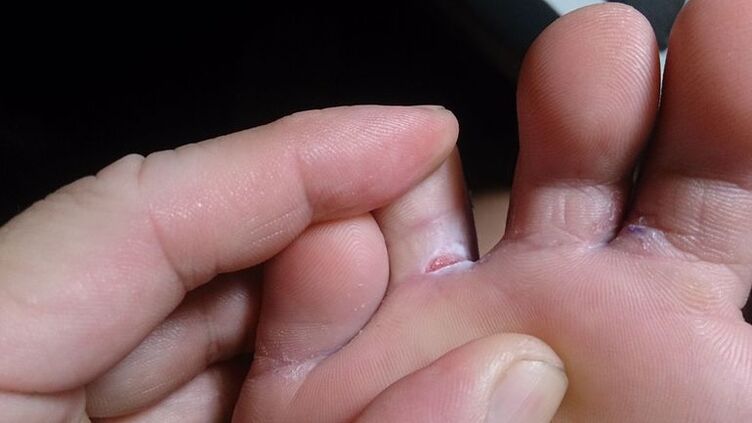
Mycoses are a group of diseases caused by pathogenic fungi.The skin areas affecting these microorganisms are called dermatomycosis.Sometimes they are combined with onychomycosis - nail disease.Knowing what the fungus looks like on the legs can cure the disease in a timely manner and prevent complications.There are several opportunities for the course of this pathology.
The mechanism of infection of the foot
There are factors that directly affect the ability to be infected with a fungus.Much in this regard also depends on the state of immunity.When the body's defense is reduced, the likelihood of the development of mycoer increases significantly.Immunity can weaken chronic infectious diseases, pathologies in the endocrine system.You can be infected with a sponge in a straight and indirect way.In the first case this happens through:
- Land layer;
- Different plants;
- Contact with an infected person or animal.
An indirect path involves the use of hygiene and other things that the patient is actively using.
Mushrooms from the genus Candida live on the surface of the epidermis.When the composition of the separated sweat glands changes, a nutritional medium is formed for the development of microorganisms.Representatives of the Candida Group get pathogenic properties.This means that they can easily cause diseases.
Classification of mycoer
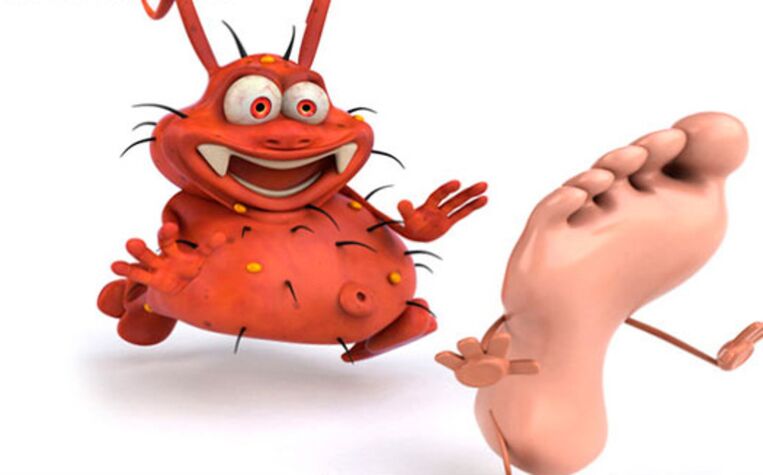
With the foot of the athlete, the skin and nails are affected.You can be infected with this disease in public places: in gyms, saunas.Through which objects are the pathogen most often transmitted?
- towels;
- washcloth;
- Oil cloth;
- Mats.
Men of adult age suffer more often from the foot of the athlete.A favorable factor in the development of the disease is an increase in sweating.
Trichophytosis can be caused by different types of mushrooms from the Trichophyton group.The disease is considered very contagious.It is transmitted through shoes carried by an infected item, washcloth, towels and other bathing blanks.The pathology occurs more often in children.The occurrence is approx.17% in young people.It is usually young men who suffer.Among adult men, the occurrence is even greater.In danger are workers in workshops, baths, showers, athletes and miners.
Candidiasis of the feet compared to the athlete's foot is less common.Most mushrooms from the genus Candida belong to the group of opportunistic pathogens.This means that these microorganisms are present on the human epidermis in a normal variant.They get pathogenic properties after a decrease in immunity.
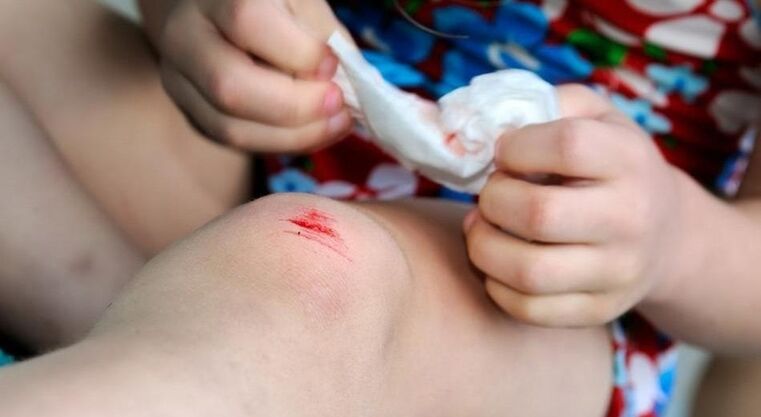
In order for Candida mushrooms to enter the body, it is enough to use items that belong to the patient.These microorganisms are often present in foods such as meat, milk and dairy.The risk of infection increases in the presence of such factors:
- Skin damage due to exposure to chemical components, alkalis and acids;
- Maceration, sweat of the skin;
- The presence of the fungus in the air in large quantities.
Symptoms of the disease
According to the nature of the course, rubramicosis and epidermophytosis are similar.For this reason, experts combine them into a category - Mikoza Stop.It is characterized by scaly, dyshidrotic and intertriginosa of its forms.A separate group is onychomycosis which may be:
- atrophic;
- normotrophic;
- Hypertrophic.
With dyshidrotic mycose, the work of the sweat glands is inhibited.The fungus on the fingers with an intertrigonic shape is similar to diaper rash.Despite such a division, it should often be considered conditional as different variations of the disease are combined.
Squamous and Dyshidrotic
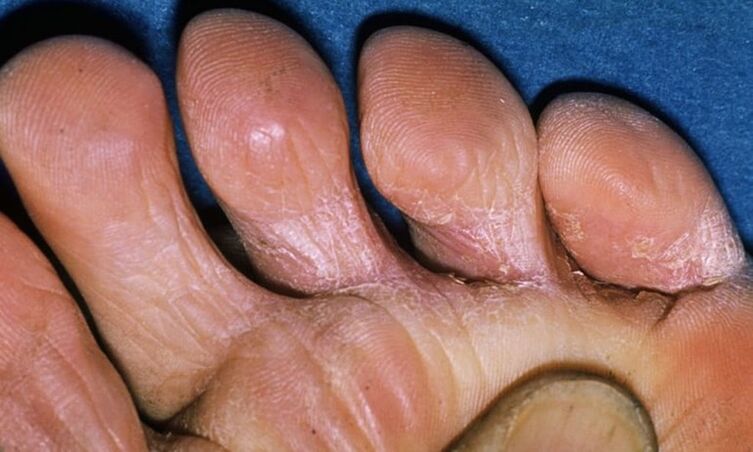
First, the fungal plate shape of the fungus affects one side.Then she switches to the opposite.Redness areas are formed on the skin, which gradually begins to peel off.Individual patients complain about itching.The area of damage can be large and small, depending on the patient's body.There are people suffering from this kind of mycosis of the feet but nothing bothering them.
The sponge on the skin on the legs with a dyshidrotic shape looks special: Bubbles are formed with a diameter of 2 to 8 mm in large amounts of shape on the arch.Little by little, they start to merge into larger formations and then burst.In their place, ulcerative skin lesions are formed.Sometimes the process switches to the inner and outer side surface.The bubbles are opened and in their place you can see areas with diaper rash with erosion.
The fungus on the legs also manifests itself in itching and tenderness.Erosion is dry and health in the future, and peeling is formed in their place.The fungal infection can be complicated by the bacterium.In this case, the liquid is placed inside the bubbles cloudy.The skin on the feet swells, blushes.A dyshidrotic form is characterized by a long stream.The remission periods change with worsening.Usually the fungus with this form only affects one foot.
Intrigctic form
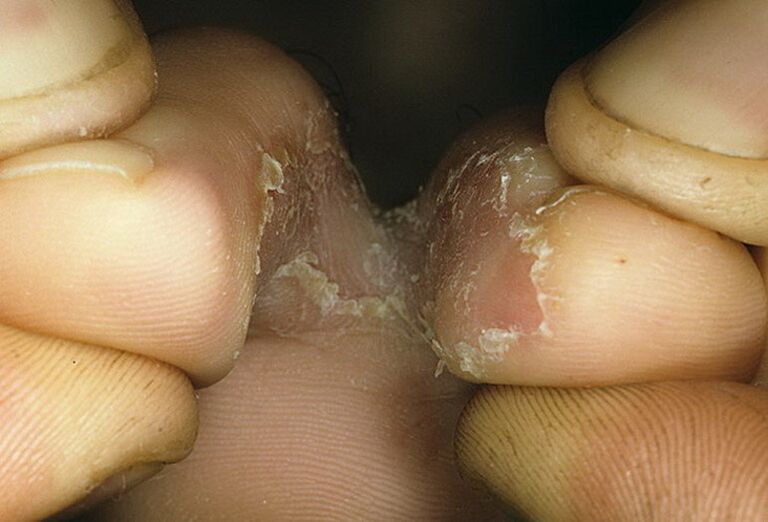
It has become most widespread and occurs independently.Less commonly, this form develops in the background of the plate mycosis.The process affects the area between the 4th and 5th fingers of the foot.The central symptom is the appearance of cracks on an epidermis with a whitish edge.The surface layers on the skin are exfoliated.Between the fingers, weakening is formed.The patient complains of combustion and itching.In areas of lesions, quite painful to affect erosion form.
Intrigctic form is chronic in most cases, has a long stream.The condition improves in the cold season and exacerbates in the summer.In patients with this form, the skin is loosened over time.Its protective functions are reduced.This creates a favorable basis for streptococcal infection.On epidermis, abscesses are formed that are surrounded by sections of swelling and redness.
Types of onychomycosis
This disease leads to damage to the nails of the fingers.The pathogen first attacks the free edges of the plate.Here stripes and spots are formed of a yellow hue.Multiple forms of onychomycosis are distinguished:
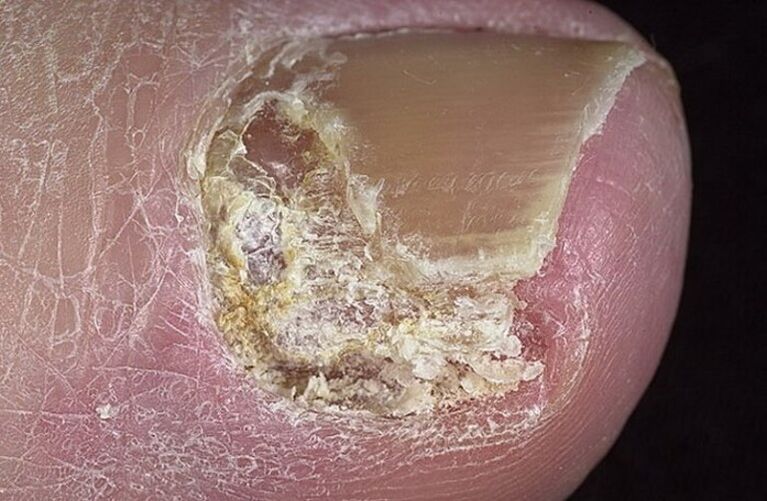
- Hypertrophic.The nail turns yellow and its thickness increases.He crumbles and the skin underneath it peels and thickens.
- Atrophic.The opposite situation is observed here when the nail becomes thin and destroyed.The skin below it is covered with a keratinized layer.
- Caused by molds.It is formed on the basis of other types of diseases of the nail.The plate can be green, yellow, brown and sometimes even black.PARONICHIA is formed in the periologies - the room - purulent inflammation.
In 70% of cases, onychomycosis 3, 4 and 5 fingers affect the legs.In 30% of cases, 1 and 4 fingers suffer.Often a normotrophic form of the disease is found when yellow spots are found on the nail, but its integrity is not violated.
Treatment of fungus
There are various treatment schemes for the disease that are individually chosen by a physician.
Additional treatment methods include intake of immunostimulants and vitamins.They help strengthen immunity.If a bacterial infection is connected, antibiotics are prescribed.Sometimes the occurrence of a fungal infection of the underlying disease is favored.It should be treated in the first place.We are talking about dermatological pathologies and chronic infections.Antihistamines are recommended in the presence of an allergic component.
Traditional medicine
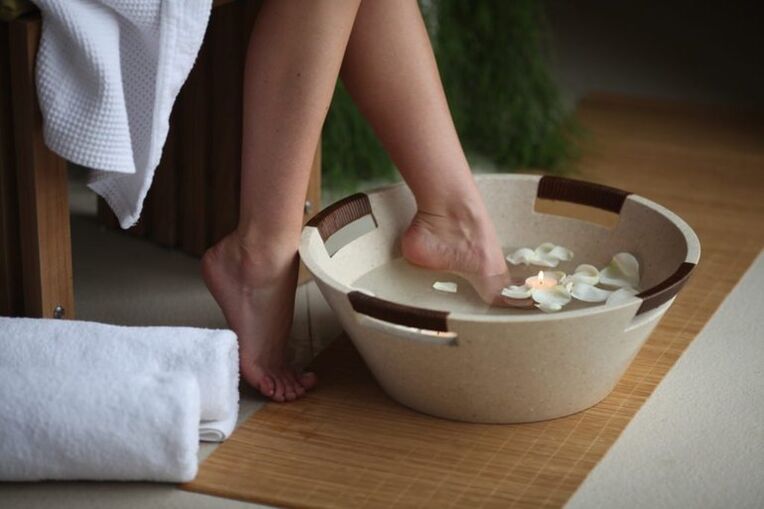
Mycoses do not pose a significant health hazard.But their presence contributes to a decrease in immunity and acts as a source of inflammation.Only antifungal therapy using specialized drugs helps get rid of this problem.In the early stages, the use of folk recipes is allowed, which acts as an addition to the main therapy.What techniques can be practiced:
- take baths;
- Treatment of affected areas with decoction of medicinal herbs;
- Use of ointment.
For baths you can use wine vinegar as it has an antiseptic effect.First, wash your feet with warm water and dry them.Then pour wine vinegar into water into a ratio of 1 to 2 and dip your feet into it.Keep them there for 5 minutes, then take on socks at night and go to bed.
Another bathing option involves the use of soda and salt.Take a tablespoon of both ingredients and dissolve in water.After this, lower your feet in the solution and hold for no more than 15 minutes.At the end of the procedure, wash your feet with warm water.
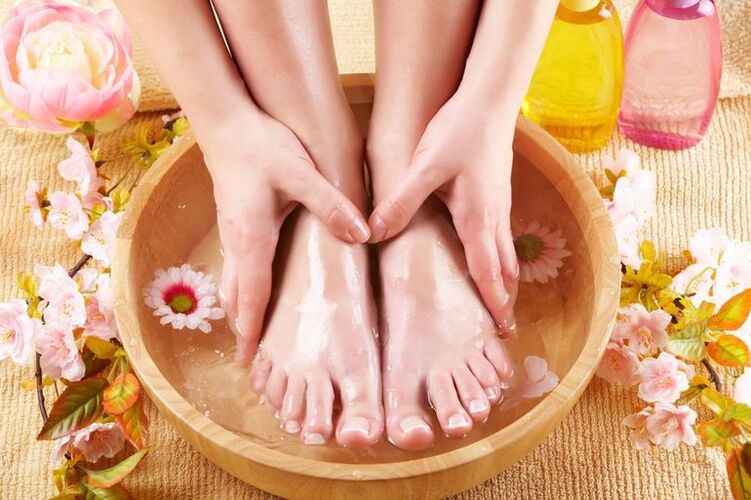
To treat the feet with medical decoctions, verbena officinalis -plant and calendula -flower stands can be used.Oak bark and dried blackberries also have a good antiseptic effect.The selected components are mixed in equal quantities.From the resulting mixture takes 3 tbsp.l. and pour a glass of water.Place on low heat for 15 minutes.Sil and moisturize the affected areas with the resulting decoction.This product can also be used for lotions.
To produce a healing ointment, you need to mix equal amounts of pork fat and sifted wood ash.The resulting ointment should be thick and have a uniform consistency.It is applied to clean and dry feet twice a day: morning and evening.





























